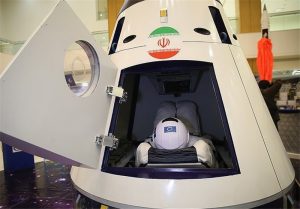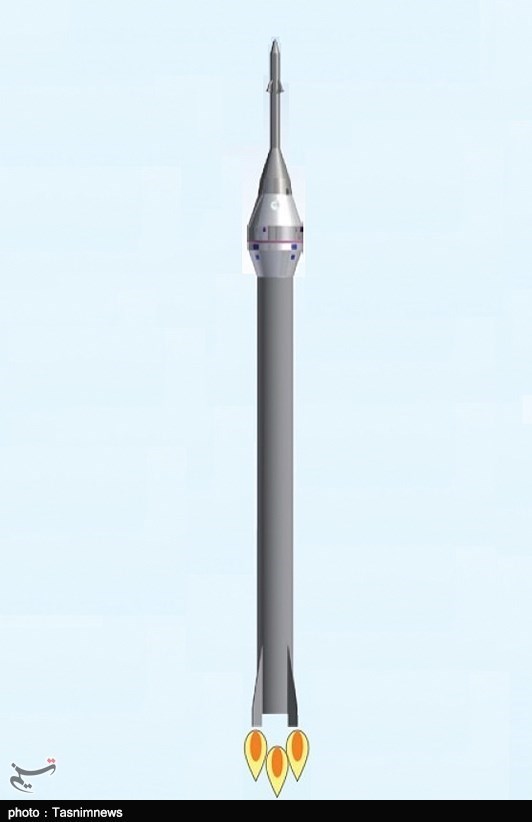
The Iranian Space Agency (ISA) completed its conceptual design for a manned spacecraft, including a human-rated space capsule and a launch vehicle, according to a report from Iranian news outlet, Tasnim News Agency.
The human-rated space capsule will weigh one ton, and will be launched into space and safely returned to Earth in nine stages by its launch vehicle. The space capsule is intended to reach an altitude of approximately 175 kilometres, suggesting that Iran’s first attempt to launch a human into space shall be a sub-orbital spaceflight.
The Iranian Space Agency is aiming to build the human-rated space capsule and its launch vehicle in time for a 2025 launch.
The announcement by the Iranian Space Agency raises the question of how its space capsule will be launched given its current ballistic missile and space launch vehicle programmes are unlikely to be upgraded and extended to the extent necessary to loft it into space. For example, the Iranian Simorgh launch vehicle would have to significantly redesigned and upgraded in order to be capable of launching a capsule with an astronaut on board. The Simorgh would require at least one more stage booster added to its current design.
Alternatively, Iran could develop its Sepehr space launch vehicle, a booster that has long resided on paper – and this is also a problem. While Iran has shown extraordinary patience in developing its ballistic missile and space launch vehicles in the face of crippling sanctions and international isolation, it has also taken it many years to complete these developments. Even if Iran had sufficient resources to begin developing the Sepehr space launch vehicle, it would be very unlikely that it would be ready to launch an astronaut by 2025.
Iran does not have to develop its own space launch vehicle in order to launch its own astronaut into space. The Chinese Manned Space Agency recently signed an agreement with the UN Office for Outer Space Affairs (UNOOSA) to provide opportunities for developing countries to send space experiments to its Tiangong Space Station, expected to be operational by 2022. The agreement with the UNOOSA also allows for countries to submit astronaut candidates to join Chinese astronauts on the Tiangong.
It is widely believed that Iran has already discussed the possibility of sending an Iranian astronaut to the Chinese space station.

Original published at: http://spacewatchme.com/2016/07/iranian-space-agency-completes-conceptual-design-manned-spacecraft/
 SpaceWatch.Global An independent perspective on space
SpaceWatch.Global An independent perspective on space

